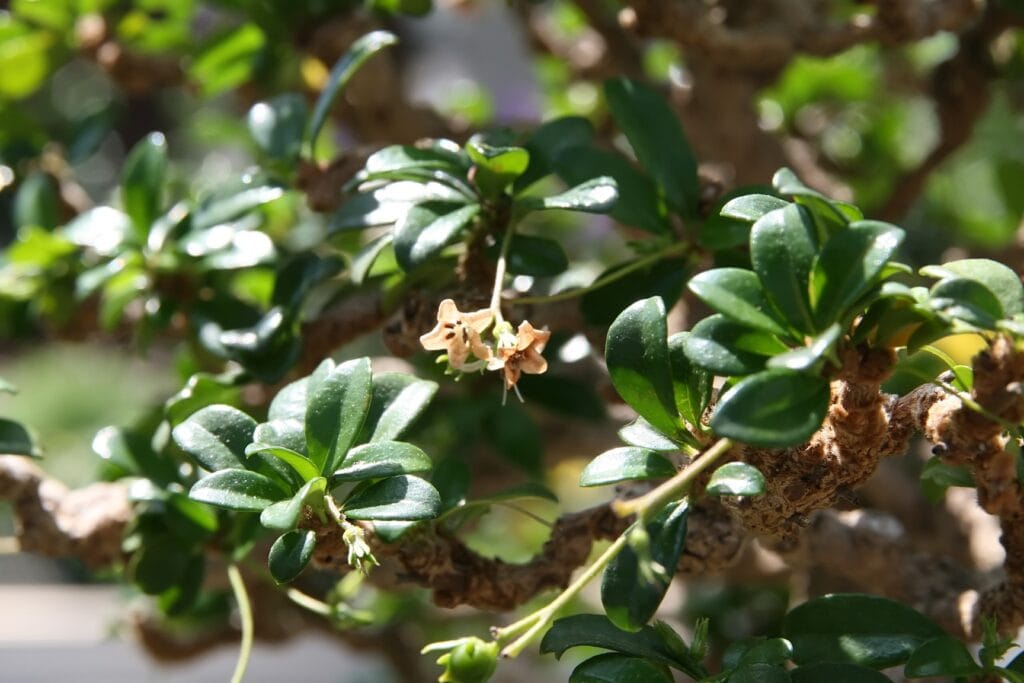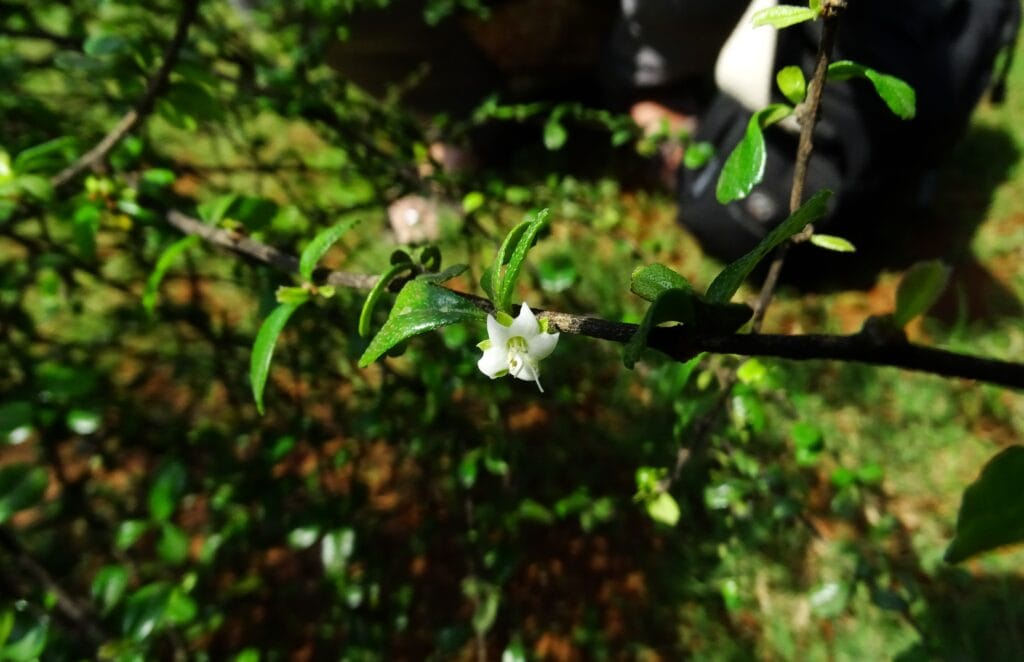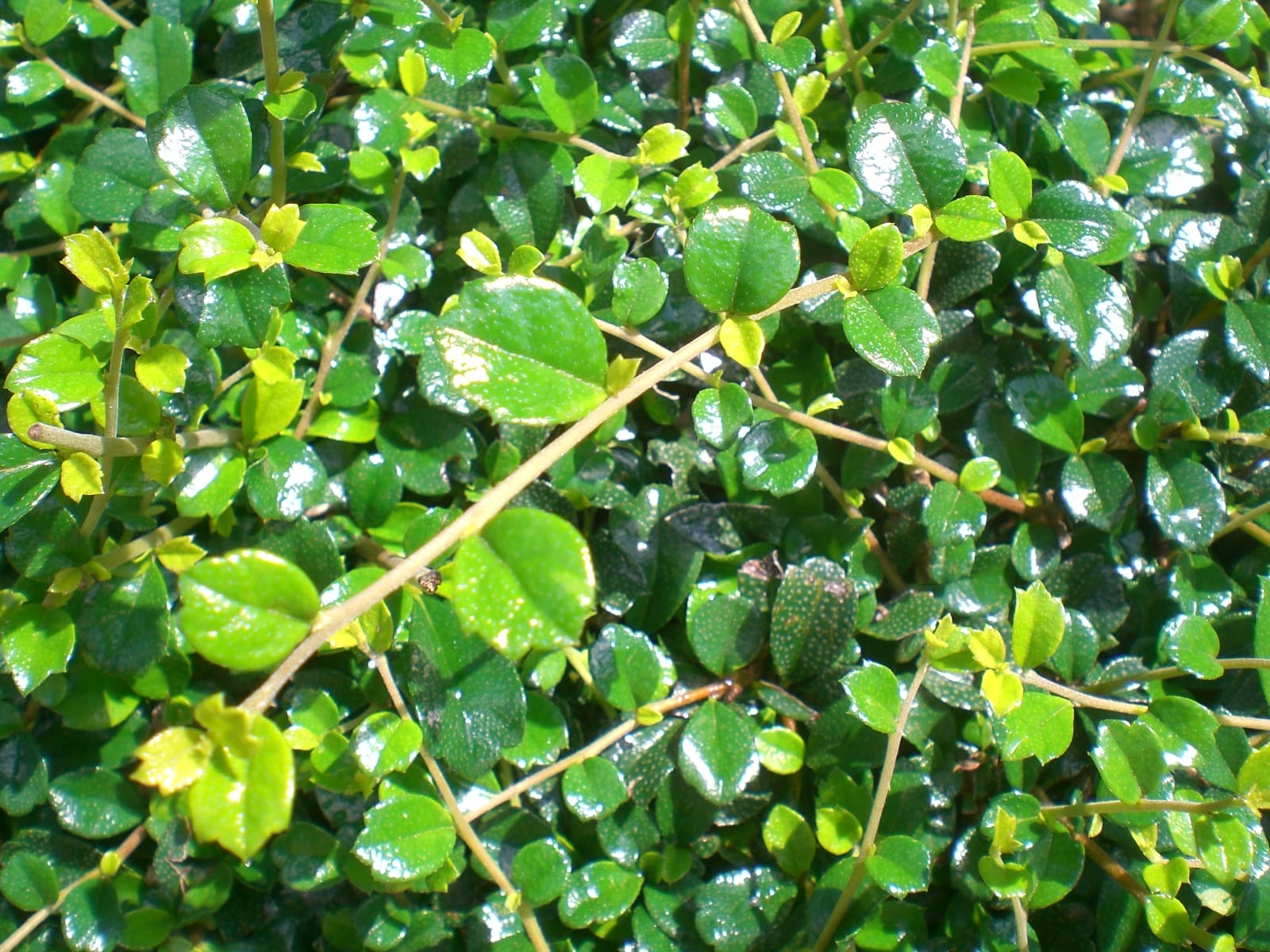Tsaang Gubat (Ehretia microphylla), commonly referred to as “wild tea,” is a small but resilient evergreen shrub native to the Philippines and other parts of Southeast Asia.
This unassuming plant holds a special place in the world of natural remedies, where it has been revered for centuries for its impressive medicinal properties.
Traditionally used to treat a variety of ailments, Tsaang Gubat remains a cornerstone of herbal medicine in many Filipino households.
Beyond its historical role, this versatile plant is gaining increasing recognition for its potential in modern health practices, environmental conservation, and sustainable agriculture.
Whether valued for its therapeutic qualities, environmental benefits, or economic significance, Tsaang Gubat continues to prove itself as a vital resource for both traditional and contemporary applications.
Before we explore the Tsaang gubat benefits, let us first delve into its fascinating history, characteristics, and the unique role it plays in our ecosystems.
History Of Tsaang Gubat
Tsaang Gubat has a rich history rooted in Filipino folk medicine, where it has long been celebrated for its therapeutic properties.
The plant’s name, which translates to “forest tea” or “wild tea,” reflects its traditional use as a herbal tea substitute for addressing various health concerns.
Indigenous communities in the Philippines have relied on Tsaang Gubat for generations to treat common ailments such as diarrhea, stomachaches, and skin irritations.
Historically, the leaves of Tsaang Gubat were boiled to create a soothing tea that served as both a daily tonic and a remedy for digestive issues. It was also used topically, often as a poultice, to address skin infections and wounds, highlighting its versatility
as a natural healer. These practices were passed down through oral tradition, cementing the plant’s role as a staple in household remedies.
In recent decades, the growing global interest in herbal medicine has brought Tsaang Gubat to the attention of researchers and health practitioners.
Scientific studies have validated many of its traditional uses, identifying bioactive compounds such as flavonoids, tannins, and phenolic acids that contribute to its medicinal properties.
This has further elevated its status, not only in the Philippines but also in international markets focused on natural and sustainable health solutions.
Today, Tsaang Gubat bridges the gap between age-old traditions and modern science, continuing to be a vital component of Filipino culture and a promising subject in the field of natural medicine.
Characteristics Of Tsaang Gubat
Tsaang Gubat is a hardy shrub with dense foliage, growing up to 1-2 meters in height. Its leaves are small, smooth, and glossy, while its flowers are small, white, and fragrant.

The plant thrives in tropical climates, often found in forested areas or as part of backyard gardens. Its resilience makes it an excellent choice for areas prone to harsh weather.
Environmental Benefits
Tsaang Gubat contributes to the environment in several ways:
- Soil Stabilization: Its roots help prevent soil erosion.
- Biodiversity Support: It provides shelter and food for small insects and birds.
- Carbon Sequestration: Like other green plants, it aids in reducing carbon dioxide levels.
Uses and Benefits Of Tsaang Gubat
In this section, we’ll explore the diverse uses and benefits of Tsaang Gubat:

Tsaang Gubat benefits, Tsaang Gubat is a remarkably versatile plant with a wide range of applications that extend beyond traditional medicine.
Its numerous benefits make it a valuable resource in health, wellness, and other industries:
Medicinal Uses
- Gastrointestinal Relief: Known for its effectiveness in treating diarrhea, stomachaches, and indigestion, Tsaang Gubat is often used as a natural remedy for various digestive problems.
- Skin Health: Its leaves are brewed into a decoction or applied as a poultice to treat skin infections, wounds, and rashes. Its antibacterial and antifungal properties make it a potent remedy for skin ailments.
- Oral Care: The plant is used in traditional remedies for mouth ulcers, gum inflammation, and bad breath due to its antimicrobial effects.
- Respiratory Health: Some traditional practices utilize Tsaang Gubat to alleviate cough and colds.
- Anti-inflammatory Agent: It helps reduce inflammation, making it beneficial for conditions like arthritis and other inflammatory disorders.
- Antioxidant Support: Its rich antioxidant content combats free radicals, potentially lowering the risk of chronic diseases such as heart disease and cancer.
Cosmetic Applications
- Skincare: Tsaang Gubat is a popular ingredient in natural skincare products for its anti-inflammatory and antimicrobial properties, which help manage acne and other skin conditions.
- Hair Care: Some formulations use its extract to promote scalp health and reduce dandruff.
Herbal Tea
- Brewed from its leaves, Tsaang Gubat tea is highly valued for its calming effects and ability to soothe an upset stomach. Its mild, earthy flavor makes it a popular choice for relaxation and wellness.
Other Health Benefits
- Immune System Support: Regular consumption of Tsaang Gubat tea is believed to boost the immune system due to its bioactive compounds.
- Detoxification: The plant aids in flushing out toxins from the body, contributing to overall well-being.
- Diabetes Management: Preliminary studies suggest that it may help regulate blood sugar levels.
Veterinary Uses
In traditional settings, Tsaang Gubat has been used to treat infections and wounds in livestock, demonstrating its usefulness in animal care.
Pest Control
Extracts from the plant are sometimes used as a natural pesticide, helping to manage pests without harmful chemicals.
Environmental Applications
Tsaang Gubat’s antimicrobial properties extend to water purification in some traditional practices, where its leaves are used to clean water sources in rural areas.
By addressing health, beauty, and environmental concerns, Tsaang Gubat continues to prove its value as an indispensable plant in traditional and modern applications.
Economic Significance Of Tsaang Gubat
The growing demand for herbal remedies has boosted the economic value of Tsaang Gubat. It is cultivated and sold in various forms, such as dried leaves, capsules, and tea bags. Small-scale farmers benefit from its cultivation, contributing to rural livelihoods.
Conservation and Challenges
Despite its benefits, Tsaang Gubat faces challenges such as habitat loss due to deforestation and overharvesting for commercial purposes.
Conservation efforts are essential to ensure its sustainable use. Community-based programs can help protect wild populations and promote cultivation.
Interesting Facts about Tsaang Gubat
In this section, we’ll explore the remarkable facts about Tsaang Gubat:

- DOH-Recognized Medicinal Plant: Tsaang Gubat is among the “10 Medicinal Plants” promoted by the Philippine Department of Health (DOH) for its proven health benefits.
- Natural Antioxidant Powerhouse: It is packed with flavonoids and phenolic compounds that combat free radicals, promoting overall health and preventing oxidative stress.
- Tea Substitute: Historically, Tsaang Gubat served as a substitute for regular tea in many rural areas, especially during times when tea imports were scarce.
- Low Maintenance: This hardy shrub thrives in poor soil conditions and requires minimal care, making it a favorite for home gardens and community herbal gardens.
- Natural Pest Control: Farmers and gardeners sometimes use Tsaang Gubat leaves as a natural pesticide to protect crops from pests without harmful chemicals.
- Cultural Significance: In some Philippine communities, the plant is considered a symbol of natural healing and is often included in traditional wellness rituals.
- Part of Herbal Medicine Research: Tsaang Gubat has been the subject of multiple scientific studies worldwide, aiming to isolate its active compounds for pharmaceutical use.
- Versatile Preparation Methods: The plant can be used in various forms—tea, decoctions, poultices, and even powdered extracts in capsules or tablets.
- Helps with Environmental Rehabilitation: Due to its ability to thrive in degraded lands, Tsaang Gubat is sometimes used in reforestation projects to restore ecosystems.
- Promotes Biodiversity: Its flowers attract pollinators such as bees and butterflies, contributing to a healthier ecosystem.
- Long Shelf Life: Dried Tsaang Gubat leaves maintain their medicinal properties for months, making it a practical choice for storage and long-term use.
- Growing Global Popularity: Beyond the Philippines, Tsaang Gubat is gaining traction in international markets for herbal medicine, especially in Asia and the West.
Culinary Uses Of Tsaang Gubat
While primarily known for medicinal purposes, Tsaang Gubat has limited culinary applications. Its leaves are brewed into a herbal tea that complements meals and is used to create health drinks in some regions.
Nutritional Benefits
Tsaang Gubat is known for its bioactive compounds, including flavonoids, tannins, and phenolic acids, which offer antioxidant and anti-inflammatory benefits. These properties support overall wellness and enhance immune function.
Traditional Dishes
In areas where the plant is common, its brewed tea is sometimes used as a base for broths or as an ingredient in detoxifying drinks. Its subtle flavor makes it a complementary addition to health-focused culinary creations.
Caution
Despite its numerous benefits, Tsaang Gubat should be consumed in moderation. Excessive intake may cause side effects, particularly for pregnant or breastfeeding women and individuals with pre-existing conditions. Consulting a healthcare professional is advisable before incorporating it into your routine.
Conclusion
Tsaang Gubat (Ehretia microphylla) is truly a remarkable plant that bridges the gap between tradition and modern science.
Its deep roots in Filipino folk medicine and its growing recognition in global herbal practices highlight its enduring value.
With its extensive health benefits, including its ability to address gastrointestinal issues, skin conditions, and oral health, Tsaang Gubat stands as a testament to the healing power of nature.
Beyond its medicinal uses, the plant also contributes significantly to environmental sustainability, providing soil stability, supporting biodiversity, and even serving as a natural pesticide.
Economically, it supports small-scale farmers and herbal product industries, demonstrating its potential as a source of livelihood. Its presence in reforestation efforts and eco-friendly agricultural practices further solidifies its importance as a tool for environmental conservation. However, the challenges of habitat loss and overharvesting call for collective efforts to promote sustainable cultivation and conservation.
As we move toward a more health-conscious and environmentally aware future, Tsaang Gubat serves as an excellent example of how natural resources can be leveraged responsibly. By fostering awareness of its benefits, advocating for its protection, and integrating its use into both traditional and modern practices, we can ensure that this invaluable plant continues to thrive for generations to come.
Tsaang Gubat is not just a plant; it is a symbol of the interconnectedness of health, nature, and sustainable living.
Also Read: Benefits of Akapulko: A Natural Solution for Skin Health and More
Well, what do you think about the article?
Did you enjoy reading “Tsaang Gubat Benefits (Ehretia microphylla): Nature’s Healing Plant“?
We really hope that you have found this article informative and engaging. If you have any thoughts or comments about this post, please feel free to share them in the comment section below. We appreciate your feedback and would be glad to hear from you.
To see more content like this check the gardening section of Money For My Beer.

